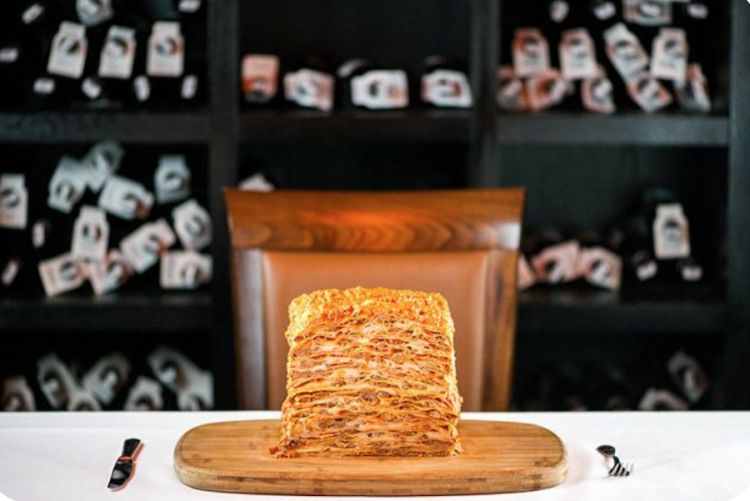The project is ambitious, and the title leaves no doubt: Signature Dishes that Matter, A global celebration of the iconic restaurant dishes that defined the course of culinary history over the past 300 years published by Phaidon, and translated in Italy by L’ippocampo. Curated by Susan Jung, Howie Kahn, Christine Muhlke, Pat Nourse, Andrea Petrini, Diego Salazar and Richard Vines, while the excellent preface is from Mitchell Davis.
Choosing the best is never easy, in any field, because you expose yourself to the criticism of those left out and of those who believe they know enough to closely inspect this list. This is something which, at Identità, we have never tried to avoid, neither Gabriele Zanatta nor myself, because a dish is too rich, too ambitious to ignore it.
The positive aspect of this effort is in the decision of choosing the best giving it a chronological depth, going back in time. But not as far as one would expect. With every choice signed by one of the seven authors, who by the way include nobody from France, Andrea Petrini has Italian roots but has long lived in Lyon, I find it peculiar that the very first dish mentioned is from 1686 and is Gelato.
The first decision is emblematic, and this choice shows the great limit of the book once the parent company sells its translation rights outside the United Kingdom. It's designed for the English-speaking world, on both sides of the Atlantic Ocean, less so for the world in its entirety.
That ice cream brought to Paris some 325 years ago by Sicilian Francesco Procopio dei Coltelli aka Procopio Cutò, owner of café Procope, seems to be included just so nobody will be able to say that the Latin world is neglected. Then we jump to 1798 to Thomas Rule's White Partridge, from the most ancient restaurant in London, Rules.
Then there's Marie-Antoine Careme in the early 19th century, first with the Vol-au-vent and then with the Millefeuille which she didn't invent - the original recipe is from 1733 - but elevated. Of course, the debut of Italy is with pizza, Margherita, from 1889 and signed by Raffaele Esposito. One year later there's Checchino's Coda alla vaccinara from Testaccio in Rome. The third Italian recipe is Fettuccine all’Alfredo, 1914, which the Americans made famous, but destroyed too, in the long run, with unacceptable sauces.

Pineapple pizza, in a box, in its original version, the one from 1962 at The Satellite in Chatham-Kent in Ontario (Canada)
The further you go back in time, the harder it is to find the original strength of the recipe. For sure in Italy we find it hard to consider the infamous Pineapple Pizza among the most significant 240 dishes. Yes, I mean the one invented in 1962 in Ontario, Canada, by two brothers who arrived from Greece, not one of the Italian contemporary versions, from
Renato Bosco or
Franco Pepe for instance. And here come the Hawaii islands with Poke and Loco Moco and Hollywood with Chiffon Cake and Cobb salad. These are choices, like with the Banana Foster from New Orleans, but overall, as
Gabriele Zanatta reminded me of, France and Italy would have much more to say. There's no mention of
Apicius and of the person whom
Ferran Adrià considers the greatest cook of all time,
Bartolomeo Scappi.

100 layers of lasagne, from Mark Ladner at Del Posto in New York
Talking about the world, the Arab world is almost non-existent, Africa is totally absent, and India is mediated by the English colonisers. And as for us Italians, I believe we would feel well represented by the Etruscan Soup, and the Spaghetti with shallots from Aimo Moroni, by Nino Bergese's Risotto alla Bergese, by di Angelo Paracucchi's Spaghetti alla lampada, by the Cantarelli's Savarin. And if we promote the Hawaiian pizza, why not include the Margherita sbagliata, which is a recipe with an idea behind, and not born by chance like many others that were born as a mistake. Above all, Massimo Bottura's Oops! I dropped the lemon tart.
Though this book may well find its place in the library of a gastronomist, it seems it lacks a historic research from the curators and ends up being rather a summary of personal likings and preferences. Perhaps the title should have been something like When a dish is nice.